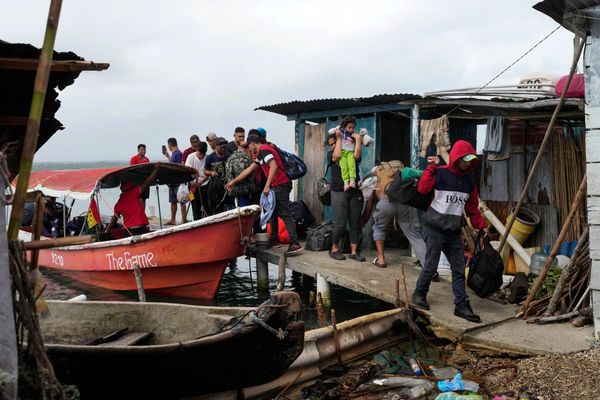Dangerously cold temperatures settled over a wide swath of the U.S. and Canada on Saturday as a massive winter storm upended road and air travel at the start of the Christmas holiday and left millions without power or facing rolling blackouts.
Temperatures will be 20 to 30 degrees Fahrenheit below normal across much of the central and eastern U.S., the National Weather Service said, and in parts of the Midwest snow totals have reached or are near record levels. Significant lake effect snow along with blizzard conditions slammed parts of the Great Lakes, while some 3,000 miles away in the Pacific Northwest, moisture interacting with Arctic air brought hazardous conditions, the NWS said.
Thousands of flights have been canceled or delayed, according to tracking site FlightAware, and road travel for those seeking to visit family or friends over the holiday weekend has been treacherous, forcing some to cancel Christmas plans.
Authorities in Ohio, Missouri and Kansas blamed weather for fatal car crashes, including four people on the Ohio Turnpike. Western New York’s Erie County, accustomed to heavy snow, enacted a drive ban amid blizzard conditions. Two people died overnight when first responders were unable to get to them, state and county officials said.
New York Gov. Kathy Hochul, who mobilized the National Guard to Erie County, called the storm one of the “worst in history” and said at news conference on Saturday the Buffalo Niagara International Airport will be closed at least through Monday morning. In New York City, Hochul toured flood-stricken areas of the Rockaways, in Queens, and said she’s asked the federal government to declare a disaster area.
The frigid temperatures taxed power grids, leading to one of the most sprawling power outages to hit the U.S. in years. Nearly 1.6 million homes and businesses from Texas to New England were without power on Saturday morning according to Poweroutage.us, which tracks utility websites, and that number had fallen to about 980,000 by midday. The hardest-hit states were North Carolina, Tennessee and Maine.
The nation’s largest power grid, which stretches from Illinois to New Jersey and serves 65 million people, said it might be forced to employ rolling blackouts as the cold has driven demand for electricity to near-unprecedented levels. The grid operator, PJM Interconnection LLC, urged customers to try and conserve.
“The possibility of rotating customer outages is real,” said PJM Senior Vice President of Operations Mike Bryson in a video recording posted on Twitter. “We are going to do everything we can to prevent that, but we think it’s important that consumers are ready in case we have to take that step.”
The U.S. Energy Department declared a power emergency in Texas, citing a shortage of electricity as an Arctic winter blast causes power plants to fail.
The Tennessee Valley Authority ordered rolling blackouts for the second straight day as demand for power soared while high winds knocked power plants offline. Duke Energy Corp. is undertaking rolling outages in North Carolina.
Nashville Mayor John Cooper asked the city’s NFL team, the Titans, to postpone its game against the Houston Texans. The game is scheduled to kick off at 1:02 p.m. local time.
U.S. natural gas production suffered its worst one-day drop in more than a decade on Friday as liquids froze in pipes, forcing wells to shut. Supplies of the heating and power-generation fuel across the continental U.S. shrank by nearly 10 billion cubic feet, or roughly 10%, from the previous day as temperatures across key producing areas including in top supplier Texas fell below freezing, according to BloombergNEF data.
Meanwhile, domestic demand surged to the highest daily level since early 2019. Early pipeline nominations tracked by BNEF indicate that gas supplies may start to rebound Saturday while still trailing normal levels.
The storm itself is now centered over western Quebec, keeping conditions in the U.S. Northeast windy, said Marty Rausch, a meteorologist with the Weather Prediction Center. It will begin to lift out Sunday into Monday, at which point the central and eastern parts of the country will begin to warm up.
The storm, which forecasters described as a once-in-a-decade phenomenon because of its size and speed, left more than 200 million Americans — around 60% of the country — under some form of winter weather warning or advisory starting Friday. It achieved the status of a “bomb cyclone” as it swept east.
It also created “substantial disruptions” at FedEx Express hubs in Memphis, Tennessee, and Indianapolis, potentially delaying holiday packages from arriving by Christmas, the shipping company said in a statement.
———
(With assistance from Gabriela Mello, Mark Chediak, Joe Ryan and Gerson Freitas Jr.)







